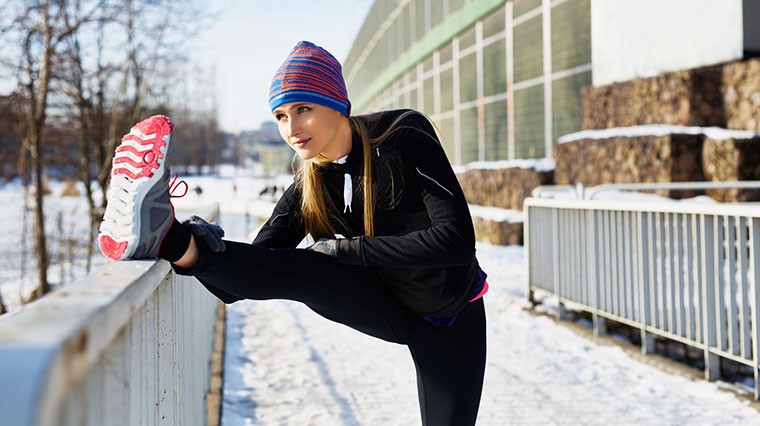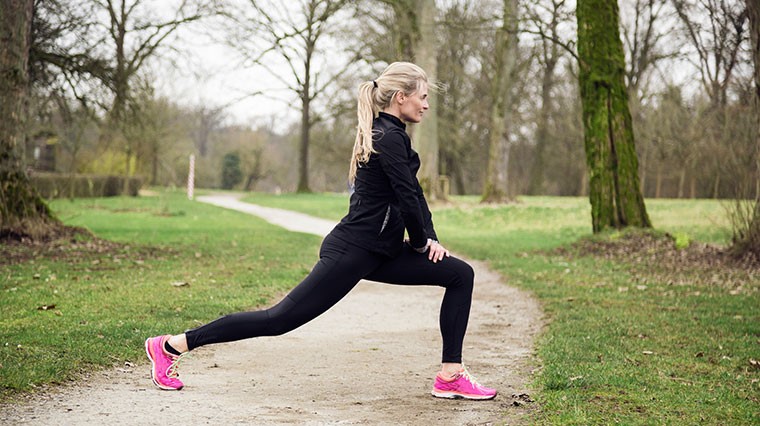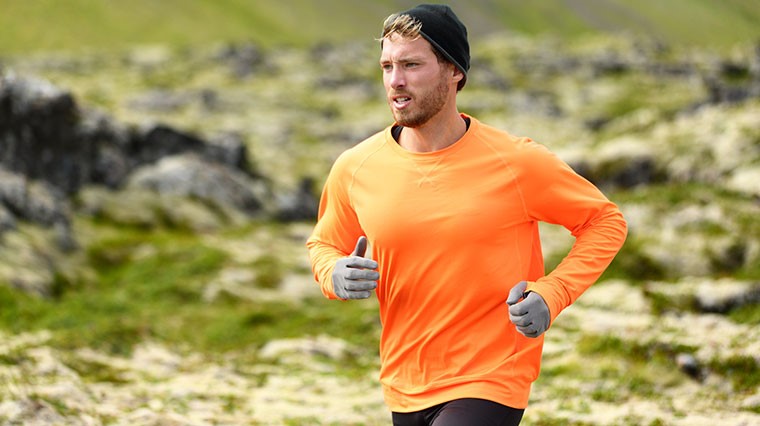What You Need To Know About Running In the Cold

Brr… it’s cold out there!
Running in the cold weather can do some weird things to your body besides freezing your booty off, but we’re here to tell you that if you take the proper precautions, it’s worth it.
Makes you need to pee
Your skin is ice, your hitting foot to pavement and you have the desperate urge to pee. It’s not just you (phew!), and it even has a name – cold diuresis.
It’s caused by vasoconstriction (the narrowing of blood vessels) to redistribute the warming effect of blood flow from the surface of the skin to your vital internal organs. This survival mechanism protects your core from cold exposure and minimises the heat escaping through your extremities.
As your blood volume is restricted to a smaller space around your critical organs your blood pressure rises, triggering your kidneys to compensate by filtering out excess fluid in your blood to be eliminated as urine.
Your body is better able to conserve heat with an empty bladder, so it’s worth heeding nature’s call and doing your thing to relieve the pressure.
Solution
Layer up to limit the impacts of cold exposure and stay toasty warm when the mercury drops. Increased urination can put you at risk of dehydration, so be sure to drink up even when you have goosebumps.
Skip your morning coffee fix and avoid alcohol (both are diuretics, so they make you need to pee). Don't forget to empty your bladder before a long run to avoid having to make a pit stop in the bushes.
Cold muscles increase injury risk

Remember how crazy important it is to warm up your muscles before exercise? In the winter, warming up is essential to literally increase the temperature of your muscles, increase flexibility and prepare them for physical activity for better performance and injury prevention.
As they are less limber, cold muscles are more susceptible to tightness, strain and injury and need to be activated before braving the bitter chill.
Warming up also gives your brain the wakeup call it needs to improve muscle coordination – a handy skill when you’re dealing with pavement slick with winter rain or frost.
Solution
Gently increase your warm up intensity by performing dynamic ‘moving’ stretches and keeping in mind our other injury prevention tips.
If it's super cold, begin your warm up indoors with leg swings, lunges and squats to boost heart rate, blood flow and muscle mobility. Wear a moisture-wicking baselayer to prevent sweat chilling against your skin once you get gutsy and head outdoors into the cold.
Keep in mind it’ll take longer to switch on your muscles than in warmer weather, and when you’re ready to hit the pavement gradually increase pace to prime your body for winter running stresses.
Dry, damaged skin
Your skin is your largest organ and a protective barrier to prevent nasties from having a party in your body – so you need to treat it right all year round.
Your skin loves to suck up moisture like a sponge, however the low humidity in winter dries it of its natural oils and may cause itchiness, irritation and a scaly appearance, but on the bright side at least you haven’t turned into a yeti .
Solution
Moisturise! Remember your sensitive areas like cheeks, nose and lips and seek products rich in beeswax, jojoba oil and shea butter due to their moisturising nature.
Many adventurers swear by applying petroleum jelly to skin before braving the outdoors to seal in moisture and to act as a protective wind barrier, but despite its benefits it may trap sweat against your skin and make you look like a gooey swamp monster.
Cover up with a windproof balaclava (not to be confused with baklava, the yummy syrupy-sweet dessert) and gloves as a protective layer when the chill air bites. If the damage is already done, apply coconut oil, aloe vera gel or other soothing products to rehydrate your skin, and avoid hot showers to prevent further irritation.
Burning lungs

It’s the dry air, not cold air that’s responsible for the burning sensation in your lungs when running in winter, but your body is pretty darn amazing including your schnoz which is nice and moist for a reason.
Your trachea (windpipe) and nasal cavity (nose) give up their moisture to humidify and warm air as it transitions down the respiratory system, preventing dryness and irritation of the lungs. If you get crazy sniffles, it’s because your body is in overdrive producing humidifying, moisture-giving mucus.
As you run and your lungs work harder, the cells lining your trachea follow suit and become dehydrated and irritated with the increased demand for moisture. This creates the scratchy, burny sensation in your throat and lungs – as if you’ve swallowed a fuzzy kitten in a woollen sock pocket.
Solution
Stay hydrated, avoid taking shallow, fast breaths that’ll dry out your airways quicker and check out our breathing tips.
Nasal breathing provides a longer airway to your lungs to effectively warm and humidify air, but there’s a catch – it limits oxygen intake, restricting your running intensity, and may cause side stitches and shortness of breath if you push it. It also can be darn tricky if you’re being invaded by snot, so throw emergency tissues into your running pack.
You can cover your nose and mouth with a Buff, balaclava, scarf or facemask to capture the moisture of your breath and assist in warming the air before you inhale.
Happy winter running!
